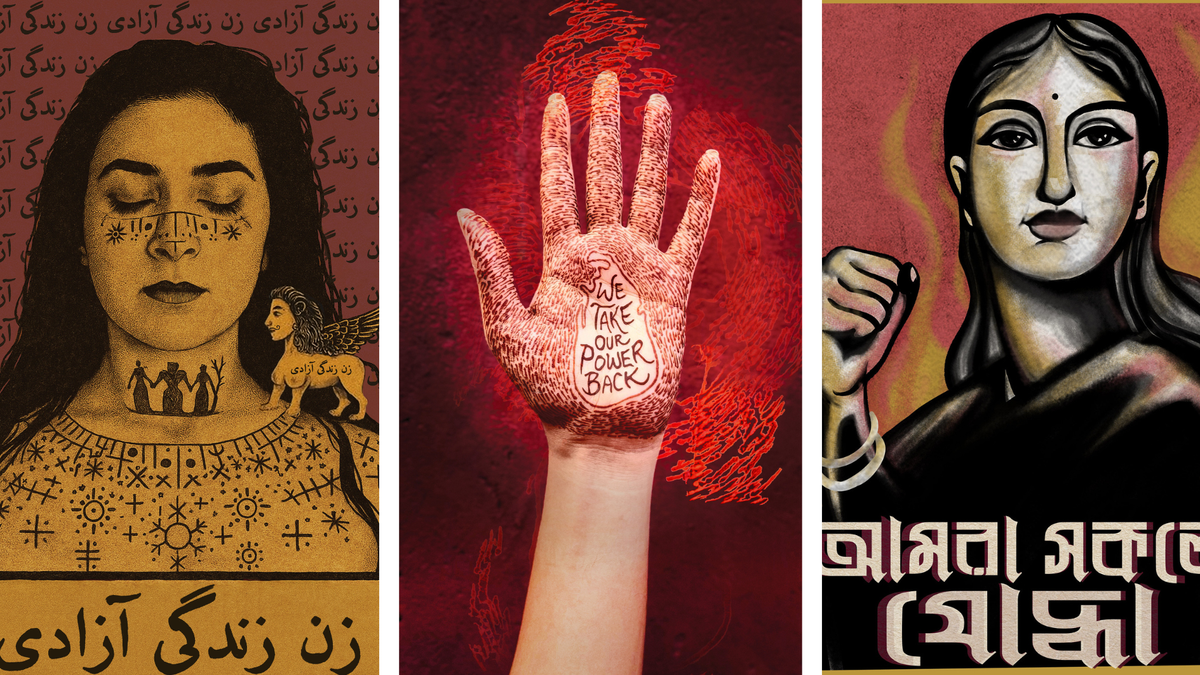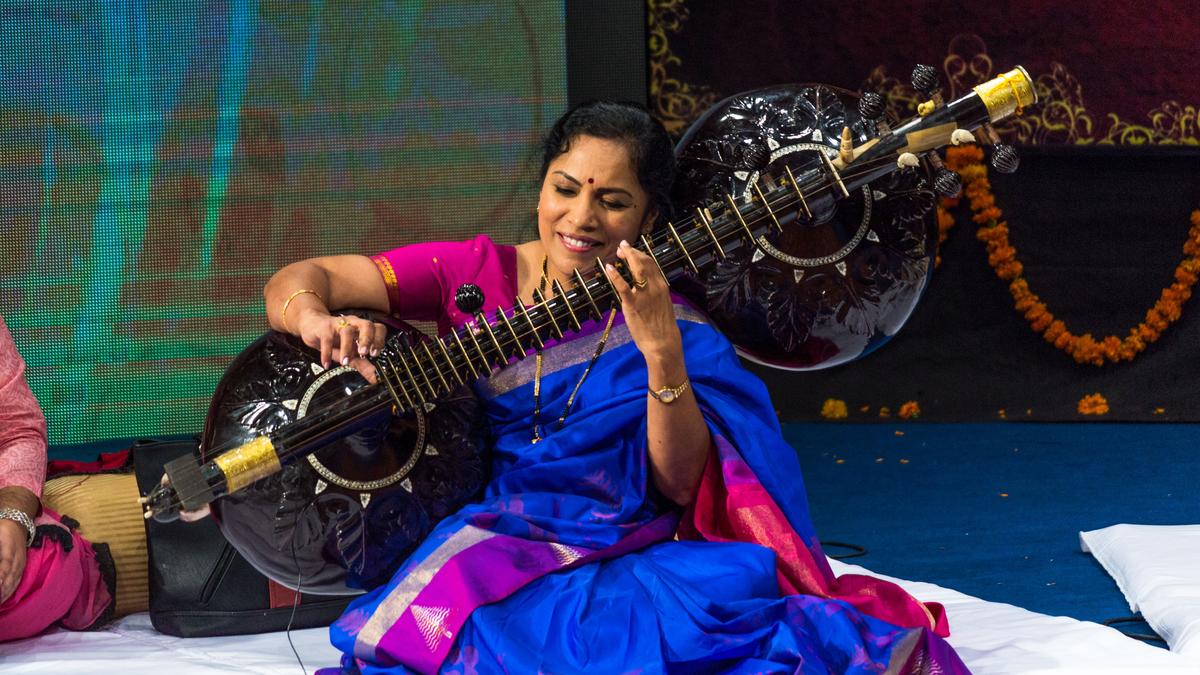Red suffused Travancore House in New Delhi. Crimson drapes floated from the roof and two huge paintings in red and gold, created live at the venue, towered over the entrance. Inside, a life-sized black-and-white cutout of a woman stood glowering, covered with text related to the gang rape of Jyoti Singh, the 23-year-old physiotherapy student, on December 16, 2012. Artist Shilo Shiv Suleman had created it during the ensuing protests and placed it at a bus stop. Now, it was part of Art of Liberation, a show curated by Suleman, founder of the Fearless Collective.
“I started Fearless down the road from here, at India Gate, in 2012. I was 21,” she shared. “My career was in a very different space. I was doing a lot of work with art and technology. Then Jyoti Singh Pandey was brutally gang raped on the streets of Delhi. And I happened to be here at a wedding at the time.”
Suleman went out to protest in her wedding finery. “We stood there on the streets for days, mourning the death of a 22-year-old girl, talking about all these invisible wounds that we had carried with us, around violence and gender in India,” she recalled. “What I witnessed was more rage, power and magic than I’d ever seen anywhere in the art world. And it felt like I needed to bring what I knew of storytelling, art, alchemy, and healing out into public spaces.”
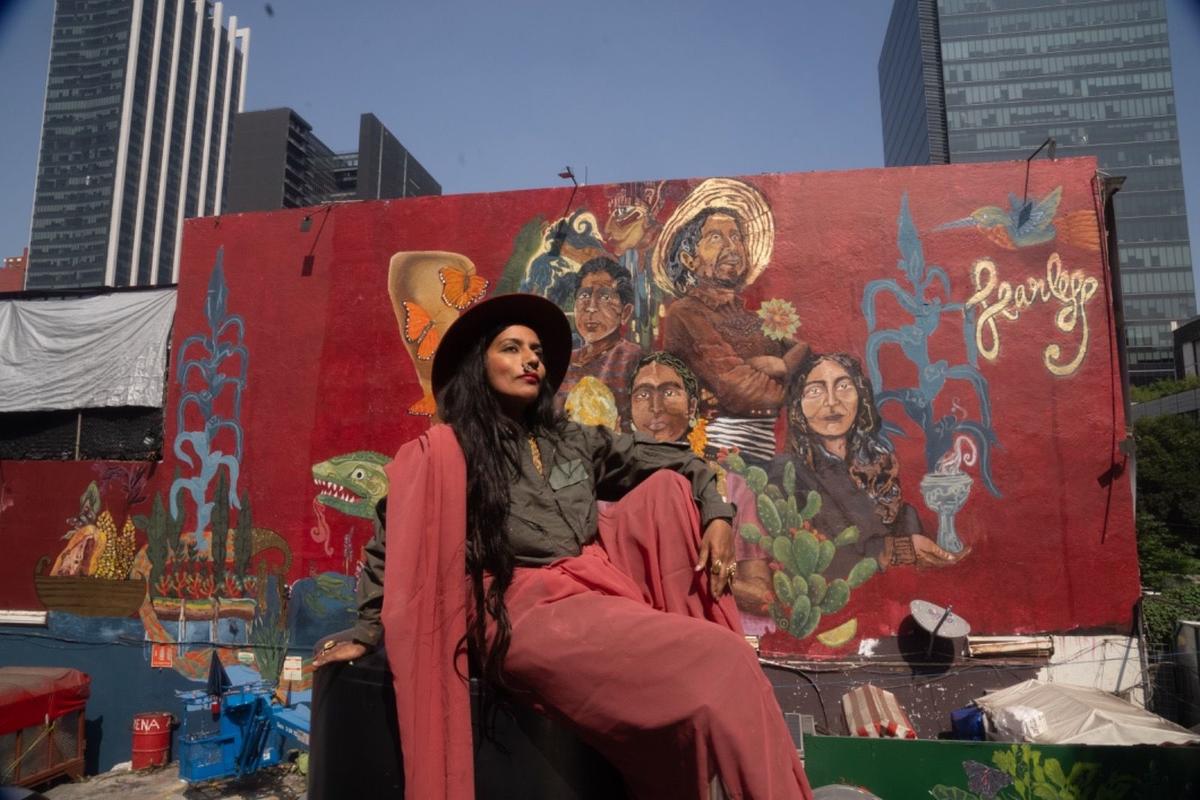
Shilo Shiv Suleman
Since then, the Fearless Collective has become an open-source movement of artists responding to moments of fear and trauma with beauty. Artists have created public installations in 70 communities in over 30 different countries — working with Muslim and Dalit women in India; indigenous communities in Brazil and North America; communities affected by gang violence in Pakistan; Syrian and Palestinian refugees in Lebanon; and queer communities in Tunisia and Indonesia.
Resistance of artists
Art of Liberation used fire as a liberatory motif, one that allowed us to imagine and shape new worlds. It also referenced Kali, who is named in the Atharva Veda as one of the seven flames of Agni, the god of fire. Set up much like the circular yogini temples, we followed the rounded structure and red flame from the work of one artist to another: from India, Pakistan, Nepal, Sri Lanka, Myanmar, Bangladesh, Afghanistan and Iran.
The show was a culmination of the Collective’s work over the past 13 years. There was Suleman’s work Women of Shaheen Bagh Standing Guard over India’s Democracy — which showed the artist towering over an image of India with the messages ‘Fearless’ and ‘Hum yahin ke hain’ (We are from here).
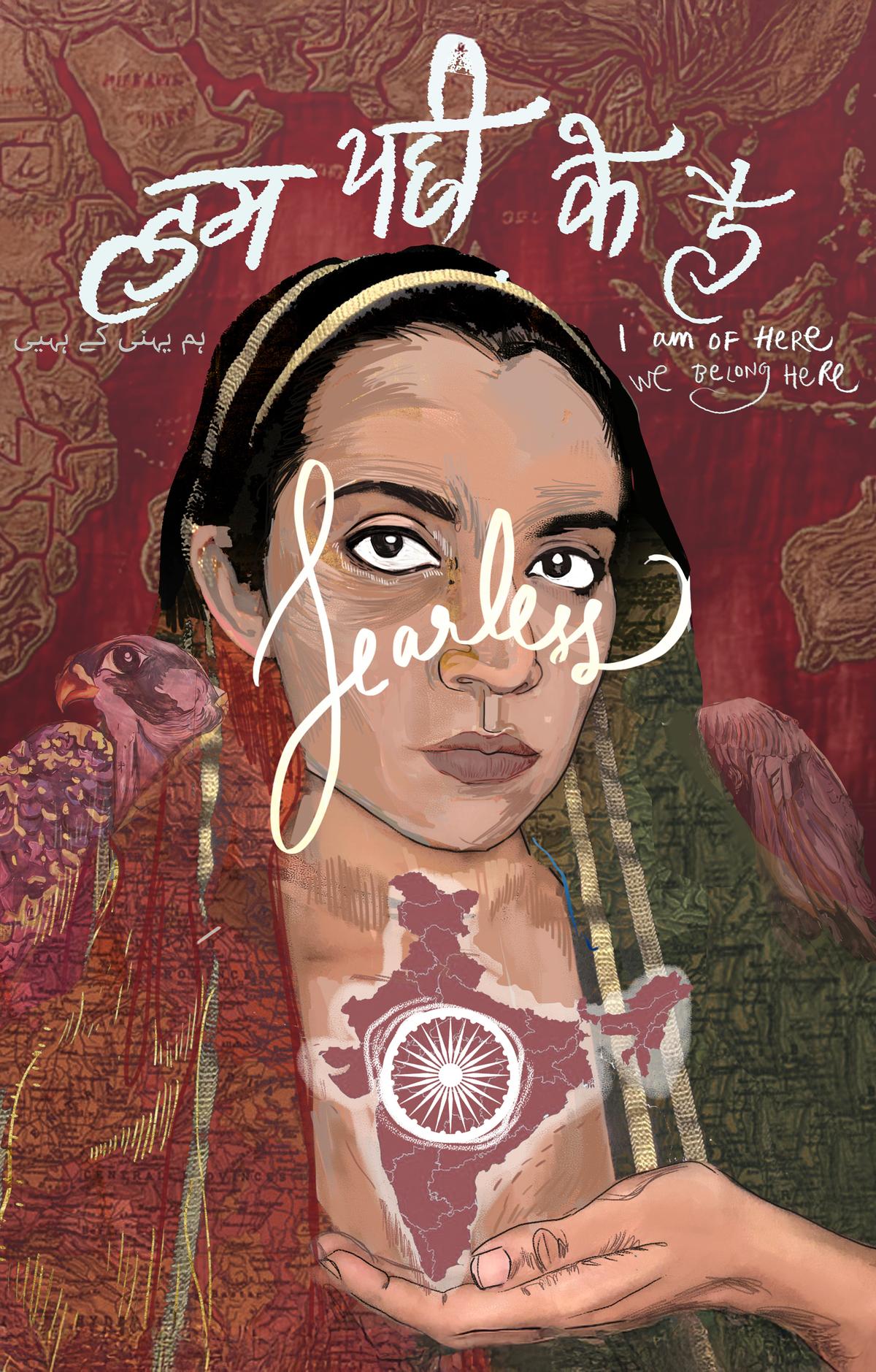
Shilo Suleman’s Women of Shaheen Bagh Standing Guard over India’s Democracy
Luluwa Lokhandwala, an artist and graphic designer from Pakistan, who reimagined Shia symbols such as the alam as emblems of defiance and spiritual strength in The Shia Alam Reborn as a Phoenix of Resilience.
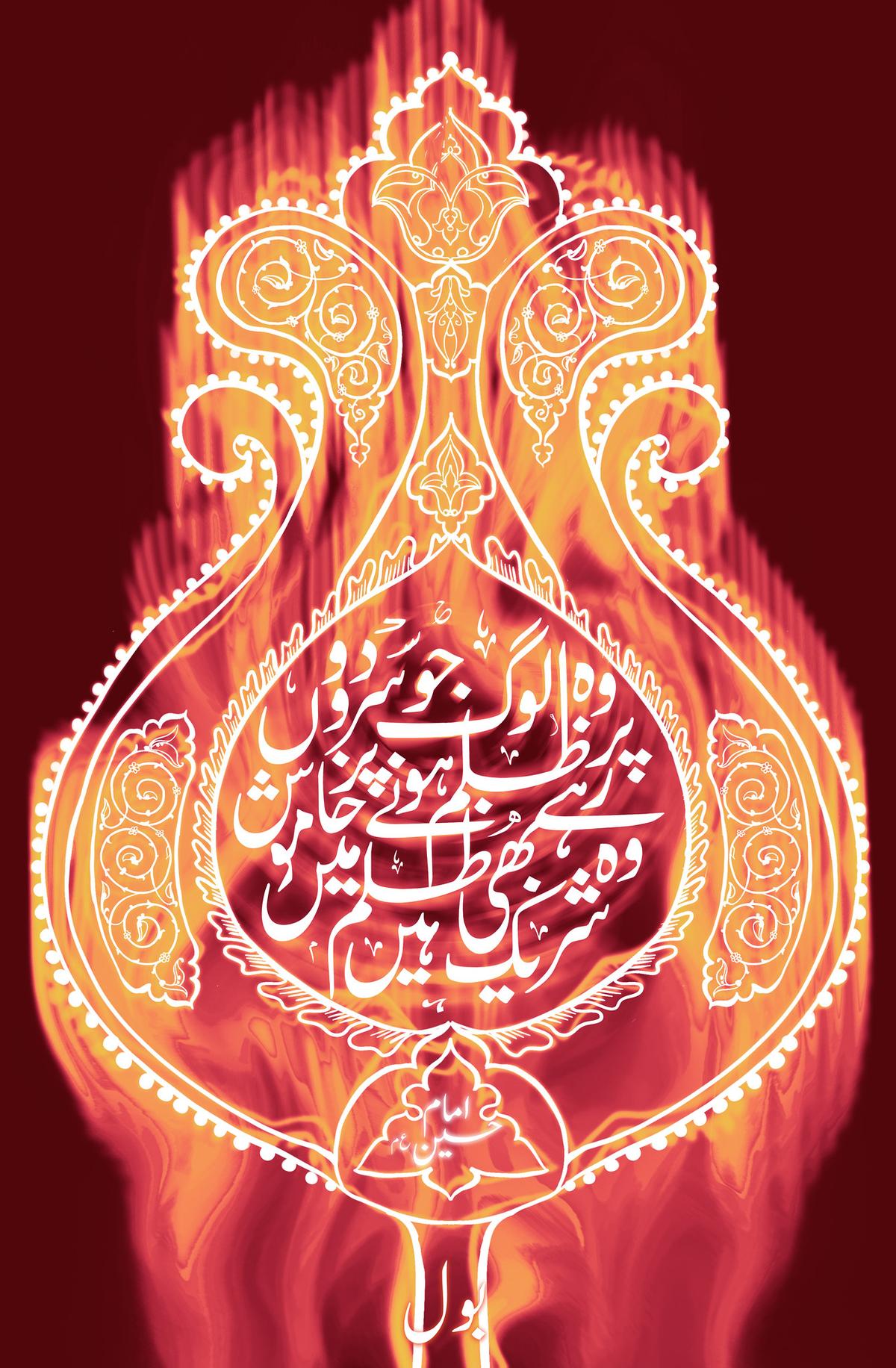
Luluwa Lokhandwala’s The Shia Alam Reborn as a Phoenix of Resilience
In other rooms we came across Guardians of Mukkumlung and the Yakthung Resistance, where Krisha Joshi from Nepal talked about indigenous communities resisting displacement and environmental destruction; and Chuu Wai Nyein’s Girls Playing with Snakes, Fearless in the Face of Terror, a powerful metaphor for the courage of women facing authoritarianism in Myanmar; among many other artists. All of the work were once displayed at protest sites in the artists’ countries during times of turmoil, and were woven into large velvet textile panels for the show.
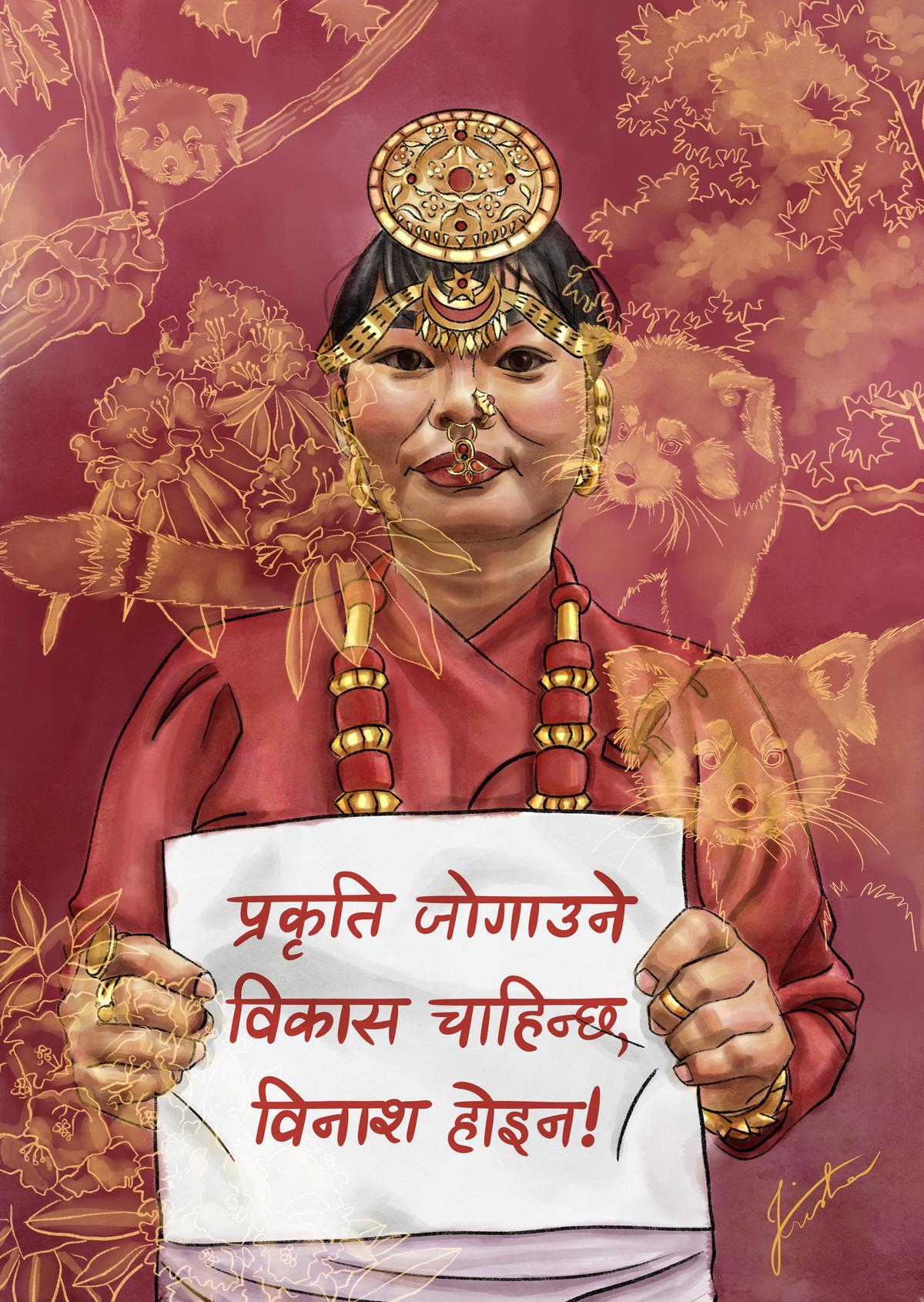
Krisha Joshi’s work
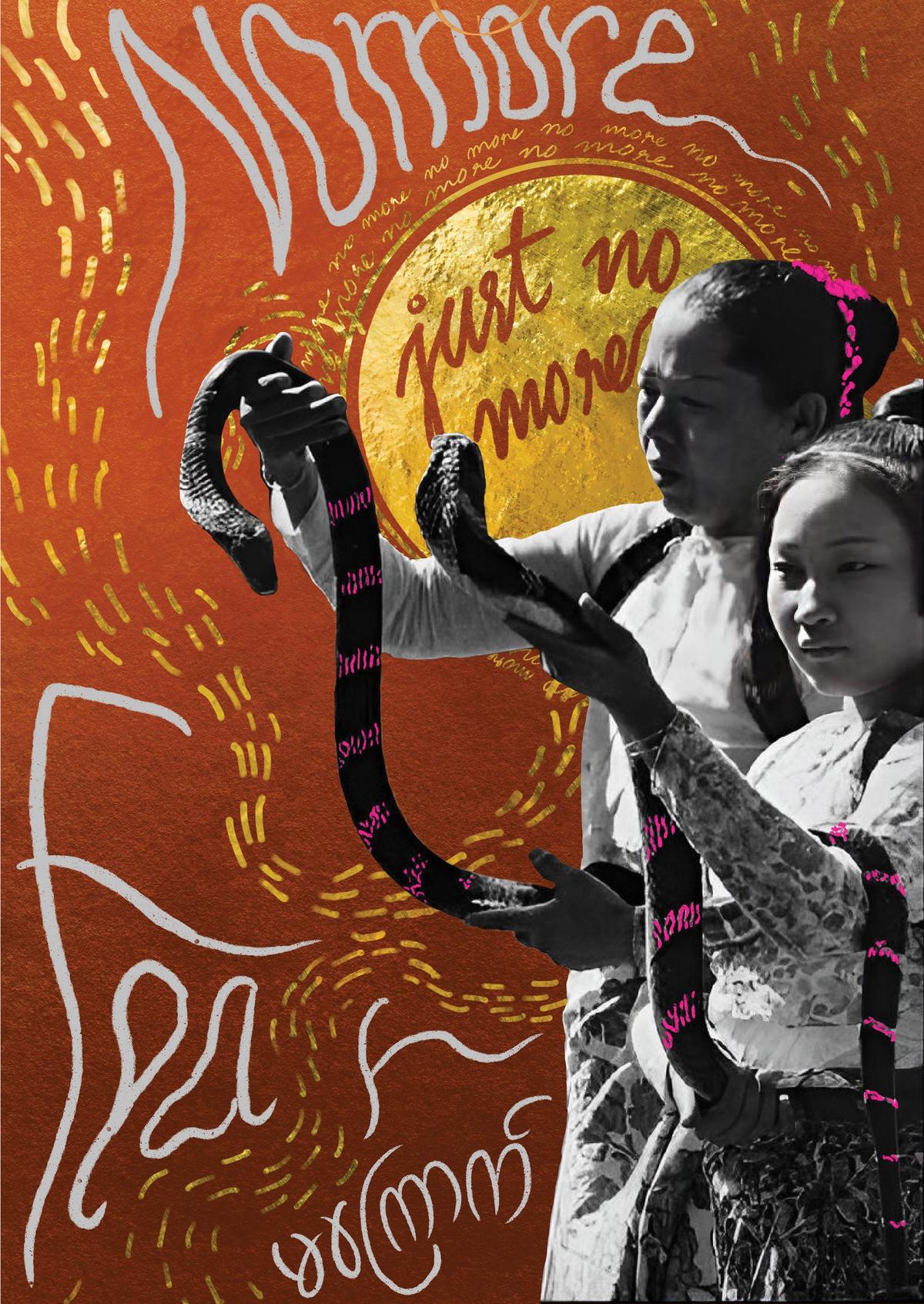
Chuu Wai Nyein’s Girls Playing with Snakes, Fearless in the Face of Terror,
“I’ve been involved with Fearless since 2022, and it’s been a deeply transformative journey,” Wai Nyein told me over email from France where she now lives. She had started a campaign called ‘Write for Your Rights’ during the military coup in Myanmar in 2021, and got a 30-year military sentence. She had to be evacuated overnight. “As a Burmese artist living in exile, Fearless gave me not only a platform, but also a community — one where storytelling, art, and resistance merge with care and empathy.” Today, as a Fearless Ambassador, she continues the approach in her own projects, whether in France or Asia, working with communities to co-create murals that celebrate unheard voices.
As they grow as an organisation, the Fearless Collective has morphed into the Fearless Foundation for the Arts, which is in the process of building a $10 million fund for political art and activism across South Asia. They have already received a $3 million grant last year from the Waverley Street Foundation, which invests in community-led programmes. Equally, Mukherjee will be putting together a show at the Venice Biennale in 2026.
The work is never done
Along with the art are other forms of protest. Vicky Shahjehan, who hails from Slave Island in Sri Lanka created political henna; actor and poet Aamir Aziz recited his poetry, including the powerful Sab Yaad Rakha Jayega, a symbol of resistance during the 2019-2020 anti-CAA protests; and Mahi G., an Adivasi rapper from Maharashtra, sang her activist songs.
“A lot of the work was done very quickly, in a short period, and in reaction to what’s happening around us,” says Suleman, who has been busy making interactive sculptures in her studio in Jaipur, and working on a series of paintings for Art Mumbai called Incarnation. “It was put on the streets, distributed freely, and put into trash cans after. This [the show] was a way of archiving what we created.”
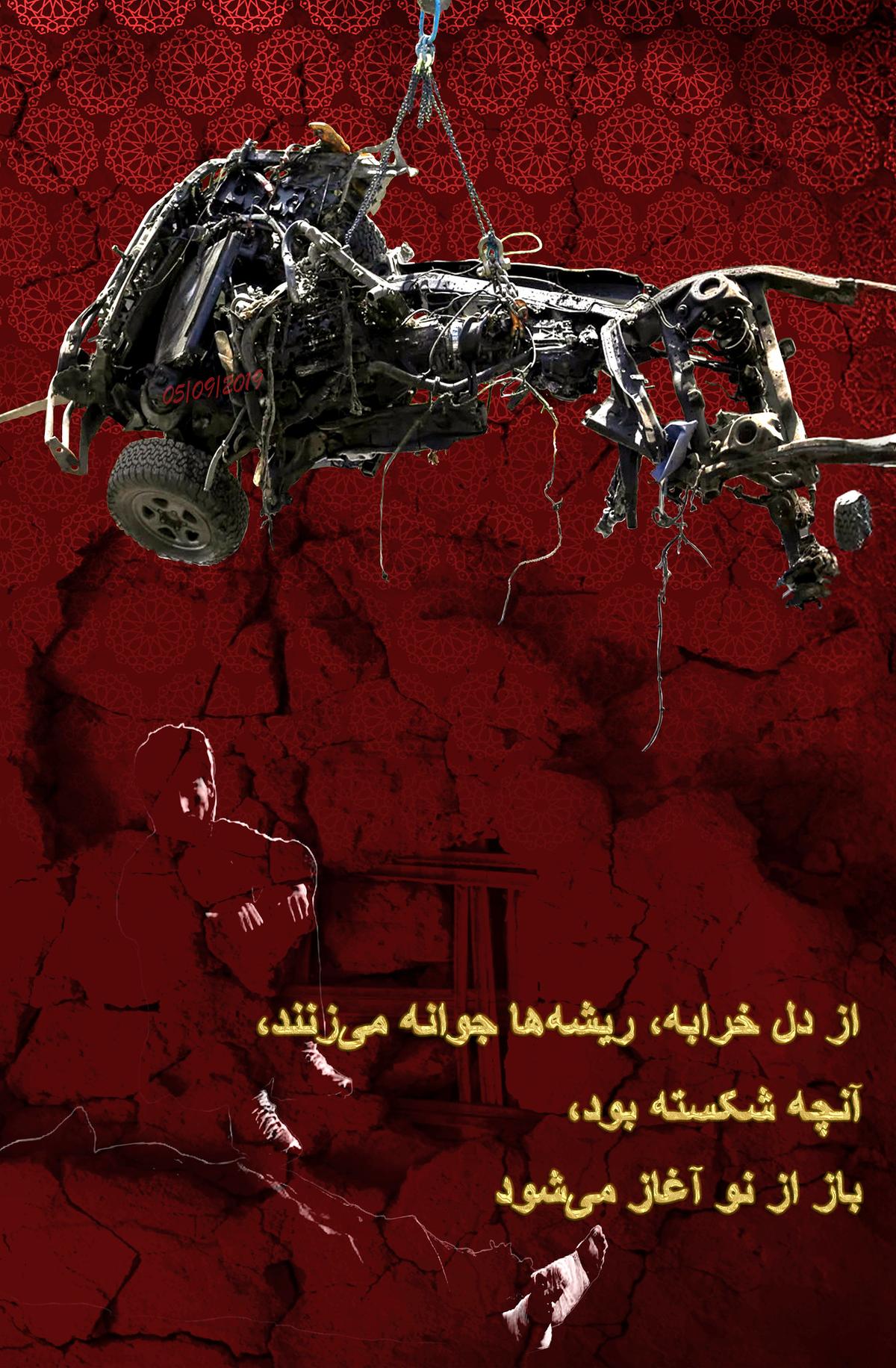
Afghan photographer Zahra Khodadaddi’s Twisted Wreckage as Testimony to War’s Aftermath
It was also the Collective’s attempt to elevate protest to high art, because it’s so difficult to get political art to be taken seriously in India. “We’re a street art movement. We work with communities on the streets, from Syrian refugees to transgender sex workers. So for us, the idea of being in a gallery was quite counterintuitive in that sense,” says the show’s curatorial advisor Myna Mukherjee. “And yet, in the last year, we’ve been in a big process of transitioning from Fearless Collective to Fearless Foundation, and it felt like it was time to occupy spaces of power, like museums and galleries, and bring the magic from the streets into them.”
I ask but get no answer to the new geopolitical pairings shaping up — where the foreign ministers of India and the Taliban are photographed shoulder to shoulder. The Fearless Collective has many new mountains to climb. The show is travelling next to Asia Society Museum in New York, and venues in London and Europe.
The writer is an expert on South Asian art and culture.
Published – October 27, 2025 01:08 pm IST
